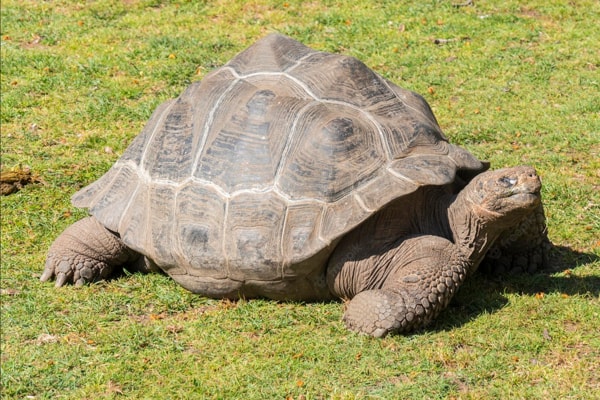
Sabías qué...
…… after the Galapagos giant tortoise, the Aldabra giant tortoise is the largest in the world?
ALDABRA GIANT TORTOISE:
Order: Testudines.
Family: Testudinidae.
Distribution: the Aldabra Atoll, part of the Seychelles islands (Indian Ocean). Today, it is also found on the islands of Mauritius, Reunion and Changuu.
Measurements: can grow to over 120 cm long and weigh up to 250 kg or more.
Food: leaves from shrubs and undergrowth.
Special characteristics: can drink through its nose, thanks to a cartilaginous septum inside the nose allows it to absorb water through this channel.
The Aldabra giant tortoise (Dipsochelys dussumieri) is indigenous to the Aldabra Atoll —designated a protected World Heritage Site— in the Seychelles, a group of islands to the north of Madagascar in the Indian Ocean. The animal was later introduced by humans onto other islands, including Mauritius, Reunion and Changuu.
They tend to spend their time in the mangrove forests and the areas near its central lake, as these areas offer the shade and shelter needed to survive. The shape of their head is rather rounded and sits atop a long neck. As the tortoises are herbivores, this neck helps them reach the leaves from shrubs and undergrowth they find in their path. They can also drink through their nose, thanks to a cartilaginous septum inside the nose that allows them to absorb water through this channel. It is believed that this is an adaptation to certain parts of the mangrove forest where it was too narrow for the tortoise to introduce its entire head, preventing it from drinking.
The skin is dark gray, almost black. Both the head and extremities are equally covered in ossified (bony) scales. Its legs are sturdy, enabling the animal to move comfortably over land while supporting its immense weight. After the Galapagos giant tortoise, it remains the largest tortoise in the world, reaching lengths of over 120 cm and weights of 250 kg or more. Additionally, they enjoy an impressive longevity, living out very long lives.
Reproduction
Sexual maturity is determined not by age, but by size. A sexual dimorphism distinguishes the male from the female. The male tortoises are larger and heavier — sometimes weighing twice as much — than the females. The male plastron possesses a concave curvature allowing it to latch to the female carapace (shell) during mating.
The breeding season usually occurs between February and May. When building their nests, they typically take advantage of holes already present in the ground, or they dig shallow (less than 25 cm deep) ones of their own. The number of eggs per clutch varies between 10 and 30, with each egg about the size of a tennis ball. The incubation period lasts from 120 to 130 days. Upon hatching, the tortoises weigh approximately 30 g, although they grow at a considerable rate during their first years.
The Aldabra tortoise has almost no natural predators. Death generally comes from falls suffered from uneven terrain or cracks in the earth, particularly during periods of high heat and natural disasters.
The Aldabra tortoises of the Oceanogràfic
Morla and Darwin are the Oceanogràfic’s two Aldabra giant tortoises. This pair came to us from the Municipal Shelter for birds and exotic animals, run by the City of Valencia, after having been seized earlier.
They are playful and very curious: they find everything around them fascinating. Like other reptiles, they are more active and hungry when it is warm. Their diet consists primarily of hay, leafy greens and carrots, though peppers, squash, tomatoes and some types of fruit are occasionally included for their protein content.


